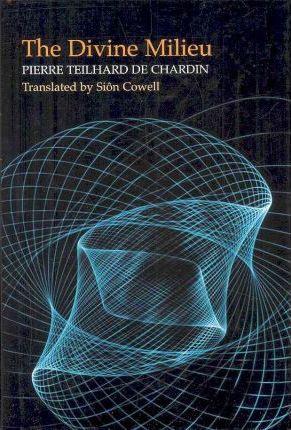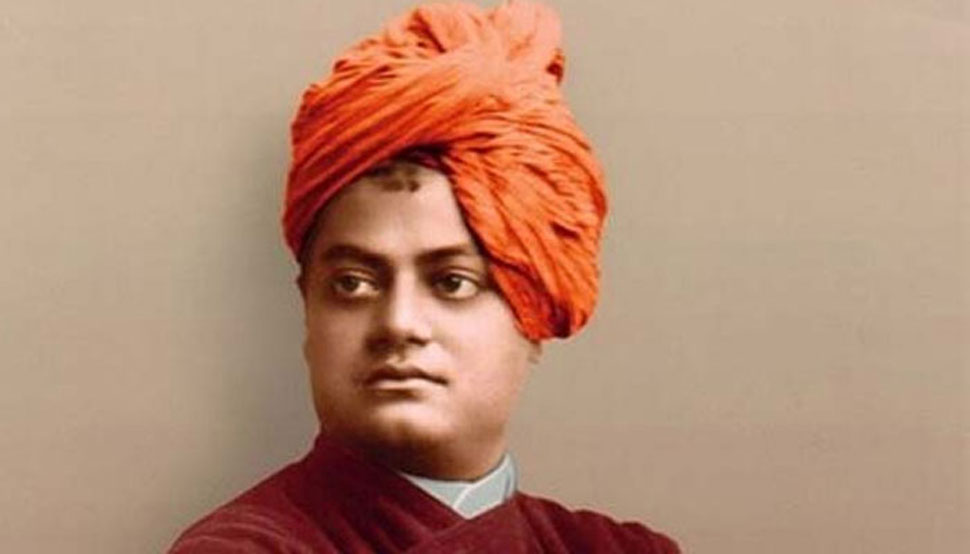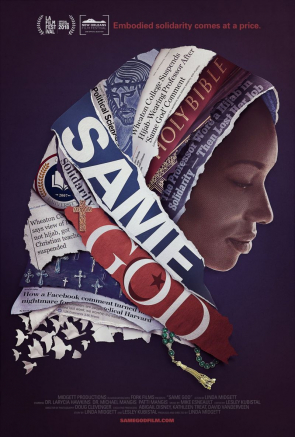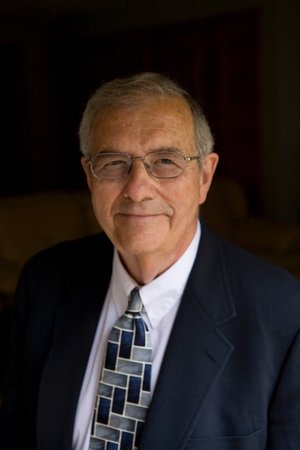Subscribe to my Youtube channel at http://www.youtube.com/@revdrsusan.
Tag Archives: intrafaith

Explaining God in 9 Minutes

How would you explain your understanding of God, the Divine, Higher Power, or however you understand that which is bigger than ourselves? Are you apophatic (the so-called ‘negative’ approach, which means emptying the mind of words and ideas about God) or cataphatic (the so-called ‘positive’ approach, that uses words, images, symbols, ideas for the Divine)?
Are you a theist (for whom God refers to a being beyond the universe, another being in addition to the universe) or a panthentheist (for whom God does not refer to a being separate from the universe, but to a sacred presence all around us)?
And how would you convey your understanding to a person of a different religious tradition?
That is my assignment for the next two weeks. On August 18, the Peninsula Multifaith Coalition will hold a panel discussion that will explore the concept of God. Six different faith traditions will be represented, and I have the challenge of presenting the Christian understanding of the Divine in just nine minutes.
This is a daunting task and the intrafaith nature of such an endeavor is that there are numerous ideas about God within Christianity. I have always approached assignments like this by explaining that I could speak only for myself, not for every branch of the Christian tradition. As a progressive Christian who leans more towards the apophatic and panentheistic, I’ve found that I’m not always in alignment even with my Lutheran background. And this assignment will be even tougher. Our planning group wanted someone from within mainline Christianity to talk about – Dum Dum Dumm – the Trinity.
Oh, boy. Should I start off with the claim by theologian Karl Rahner that if the Trinity were to quietly disappear out of Christian theology, never to be mentioned again, most of Christendom would not even notice its absence! Probably not.
It’s not like I haven’t written and spoken about the Trinity. Looking back in my records, I can find a bunch of sermons and blog posts that deal with it. That kind of made me wonder why I’d spent so much time on a topic most of Christendom wouldn’t even miss. I mean, many progressive Christians have ditched it altogether. But I am one who is reluctant to throw out the baby with the bathwater. And there are some theologians, like Richard Rohr (The Divine Dance) and Cynthia Bourgeault (The Holy Trinity and the Law of Three: Discovering the Radical Truth at the Heart of Christianity) who have made the Trinity much more intriguing to me.

But how to approach it an interfaith setting – and in nine minutes? Do I go with the good old ice/water/steam analogy (very kataphatic)?

https://creativecommons.org/licenses/by-sa/4.0, via Wikimedia Commons
Or a more apophatic image, conveying the unknowable Mystery?
You can probably guess which appeals more to me.
So I have an interfaith and an intrafaith dilemma. My understanding of the Trinity actually is very interfaith friendly. But it isn’t the mainline version.
I don’t have an answer yet. But as soon as I figure out what to do with my nine minutes, I’ll let you know.

Spiritual Fluidity

I was very interested when I learned that the book club of my area’s interfaith organization was reading When One Religion Isn’t Enough: the Lives of Spiritually Fluid People by Duane R. Bidwell. I hadn’t heard of this book, even though it was published in 2018. But I was intrigued because in my book, The INTRAfaith Conversation, I have a chapter entitled “New Voices.” And one of those voices is “Hybrid Spirituality: Multiple Belonging.” In it I quoted Francis X. Clooney, SJ:
The phenomenon of “multiple religious belonging” is now deeply engrained in American culture. We can no longer imagine simply the prospect of well-established religions and their members deciding whether to dialogue or not. People, younger people in particular, find themselves in the position of having multiple religious attractions, and experiences and commitments which cannot easily be fit into any given religious system.
For such people, it is unlikely that even upon ecclesial insistence they could give up strands of identity not easily reducible to a single tradition or church.
This obviously has huge implications for the church in the 21st century and we would be wise to pay attention to it.
I did learn (or relearn)some things from Bidwell’s book, beyond enjoying the stories he told of people living out their hybrid spirituality and resonating with his experience as an ordained pastor navigating the ecclesiastical institution as a hybrid.
First, was his statement “I do not believe that God is one or that all paths reach the same mountain.” This reminded me of Stephen Prothero’s book God Is Not One: the eight rival religions that run the world– and why their differences matter. I squirm when I hear interfaith friendly people declaring that “it’s all the same God” and “we’re all clinging the same mountain on different paths.” Even at a session of the Parliament of the World’s Religions, I was surprised when a speaker declared that we all worshipped the same God – especially when we’re also including people of no faith.
But I realized that I have preached about the one-ness of the Divine myself. A few weeks ago, when John’s gospel’s Jesus prayed “that we might all be one,” I played the music video “One” by Billy Jonas. It’s really a very cool video, but now I can see the problem in some of the lyrics.
One plus one
Plus one plus one
Makes ONE
One likes Jesus
One likes Judah
Yogananda, Allah, Goddess,
the Buddha!
Says ‘wait how do you pick a path?’
Solution: NEW new math
One plus one
Plus one plus one
Makes ONE
ONE-der where its leading to.
One-derful, wondrous thing
One way – the way we’re going.
One plus one
Plus one plus one
Makes ONE
It might not make a big difference when watching a video, but it’s something to think about.
The second thing I found interesting was Bidwell’s section called “Names Matter.” It reminded me of the explanation in my book of the dilemma of what to call the interfaith movement:
There is much ongoing discussion about what to call the movement. The Rev. Dr. Andrew Kille, executive director of the Silicon Valley Interreligious Council (SiVIC) writes that “interfaith carries some muddy implications that can be confusing – ‘interfaith’ organizations in the past meant ‘ecumenical’- all Christian, or, at best, Christian/ Jewish. It has also come to describe traditions that blend two or more religious observances into some whole. We chose ‘interreligious’ partly because the term is less familiar, partly because it suggests relationships between distinct traditions, rather than a blending of them. Multi-faith has much the same kind of sense about it. ‘Interreligious’ is also a term that hopes to include traditions for whom ‘faith’ is not really a meaningful concept- Buddhists, Wiccans, etc.”
Interfaith? Multi-faith? Interreligious? Multi religious? Pan-spiritual? Religio-pluralistic?
For the purpose of this book, I will usually use ‘interfaith.’
Now, Bidwell has added multiple religious belonging, dual religious practice, religious hybridity, to the list of problematic names and the challenge they entail. He chooses instead to use spiritual fluidity, religious multiplicity, and multiple (or complex) religious bonds.
For those of us who care about such things, it just goes to show the ongoing complexity of our religious/spiritual landscape.
And for those who don’t, there’s always
One plus one
Plus one plus one
Makes ONE
And maybe that’s OK.


You Might Be a Christian Atheist If . . .
 New Voices . . .
New Voices . . .
is a chapter in my book, The INTRAfaith Conversation, in which I describe some of the groups now included in the interfaith scene.
These groups include . . .
Atheists and Humanists
Since the book was published in 2015, there have been a lot of new developments. I was aware of the wide range of definitions for atheists and humanists when I wrote the book. Since then, I’ve been fascinated by the further exploration, expansion, and definition of these terms. I’m not much interested in the fundamentalist atheists, who are just as dogmatic as the religionists they criticize. But I am drawn to those who are exploring the boundaries of who and what God (or Being or Presence or no word at all) is.
Probably the most public lately has been Gretta Vosper, the self-professed Atheist who is a pastor in the United Church of Canada (I wrote about her in Should the Atheist Pastor Be Defrocked?). In 1997, four years into her call to West Hill United Church in Scarborough, Ontario, she preached a sermon called “Deconstructing God.” At that point, she defined herself in a more “not this” manner, declaring that she did not believe in a theistic God. Then in 2013, she moved from non-theism to atheism after she read about the plight of Pakistani bloggers who faced punishment as blasphemers for questioning the existence of God. For her (according to her website), “god is a metaphor for goodness and love lived out with compassion and justice, no more and no less.”
In 2017, I met Carrah Quigley when we presented a workshop together at the Parliament of the World’s Religions in Toronto. Carrah identifies as a Spiritual Humanist. According to the Church of Spiritual Humanism, this is a “religion based on the ability of human beings to solve the problems of society using logic and science . . . using scientific inquiry we can define the inspirational, singular spark inherent in all living creatures.” Spiritual Humanism is natural, not supernatural.
 Atheists for Jesus?
Atheists for Jesus?
Then, just this month I came across the category of Jesus-following Atheists (also known as Christian Atheists) in an article entitled Inter-faith Dialogue with Christian Atheists.
Hmm. Intriguing.
From what I’ve read, it seems that the main focus of Christian Atheism is the life of the historical Jesus and the system of ethics drawn from his teachings. Although, regarding the subject of God, there is some divergence. While some do reject the idea of God altogether, others dismiss the belief in a supernatural, interventionist God. According to the author of What Does It Mean to Be a Christian Atheist?, “I still believe in ‘God.’ What I do not accept is belief in a theistic deity, a ‘being’ that created the universe, holds the universe together, or exists in or apart from the universe.”
Of course, Bishop John Shelby Spong has written and spoken much about the death of theism, and I greatly appreciate his insights about coming to reject the belief in a supernatural power. I don’t think he calls himself an a-theist; he’s more inclined to dismiss as inadequate these words for our experiences of the Divine. The experience is what is important. In this sense, I have no qualms about calling myself an a-theist. Especially since he doesn’t reject the reality of mystical experiences of the Holy, as do some who adhere only to the ethical teachings of Jesus.

However, at the end of the day, I still resonate most with Teilhard de Chardin’s panentheism, in which all creation exists within a ‘divine milieu.’
Still, I am intrigued by the ongoing exploration of what we mean when we think about God (the Divine, Spirit, or no name at all). The freedom to go outside the bounds of our traditional (and limited) understandings enhances not only our own spiritual/ethical life, but our communal life as well.
The interfaith world benefits from the presence of those who do not fit the definition of “religion.” The intrafaith scene can benefit as well, if we get past our prejudices (especially when we don’t know the broad range of these groups) and listen to their stories.

What to Do with “I am the Way, the Truth, and the Life”?

In virtually every workshop I’ve ever led about interfaith matters, someone asks the question: “What about when Jesus said, ‘I am the Way, the Truth, and the Life. No one comes to the Father except through me?”
Here is an audio version of the interview I did with Steve Kindle of Pastor to Pew a few years ago. We talk about my book, The INTRAfaith Conversation. But mostly it’s my take on John 14: 6 and how taking the intrafaith question seriously is a necessity for today’s church.
You can also see the video here.
Remembering Swami Vivekananda: We Need INTRAfaith Harmony
 “Need for intra-faith harmony, says ex-Prez”
“Need for intra-faith harmony, says ex-Prez”
is the headline in The Pioneer, the second oldest English language newspaper in India.
Remembering Swami Vivekananda’s historic appearance at the Chicago World Parliament of Religions, held in 1893, many notable personalities, including former President of India Pranab Mukherjee organised a interfaith meet at Vivekananda Mission on Wednesday to celebrate the 125th anniversary of the historic speech.
Celebrating the anniversary, Mukherjee said,
“There is perhaps a need for intrafaith harmony
even more than the interfaith harmony.”
Vivekananda’s historic speech has been remembered and celebrated by many across the country every year.

Do Muslims and Christians Worship the Same God: More from Wheaton College
 A new documentary asks the question: Do Muslims and Christians worship the same God?
A new documentary asks the question: Do Muslims and Christians worship the same God?
Same God, which will be screened at the Los Angeles Film Festival later this month, is based on the story of Professor Larycia Hawkins and her experience at an evangelical Christian college. You can see a trailer for the film here.
I’ve been interested in this story since it broke in December 2015, when Professor Hawkins, the first female African-American tenured professor at Wheaton College, announced her intention to wear a hijab during Advent in solidarity with Muslims.
But it wasn’t just this announcement that put her in the Wheaton crosshairs; it was a Facebook post in which she said that Christians and Muslims worship the same God. This caused administrators to question whether Hawkins had violated the school’s statement of faith. They put her on paid leave, and on January 5, issued a Notice of Recommendation to Initiate Termination-for-Cause Proceedings. That’s when I posted about it on this blog, calling it a classic example of our need for an intrafaith conversation: Wheaton College: an Intra-faith Controversy
Intrafaith Controversy Redux
In October, 2016, the New York Times Magazine published an article entitled “The Professor Wore a Hijab in Solidarity – Then Lost Her Job” and I wrote an update to my blog. My contention was – and still is – that it’s a perfect example of the necessity of intrafaith discussions among Christians of differing theological perspectives. I wrote:
Dr. Hawkins identifies as a Christian. Her Christianity allows her to make the statement she made by wearing the hijab. The administration and many alumni of Wheaton College have a different interpretation of Christianity. Rather than dismissing this popular, well-qualified educator, would it not have been wiser to use the controversy as an opportunity for an intrafaith conversation?
The Story Continues . . .
Linda Midgett, director of Same God and a graduate of Wheaton College, admits that she didn’t think much of the situation at the time. But when she realized the uproar among students, alumni, and within the larger evangelical community, she said:
didn’t think much of the situation at the time. But when she realized the uproar among students, alumni, and within the larger evangelical community, she said:
A rift quickly formed. On one side were those, like me, who felt her gesture was unmistakably Christian in nature. On the other side were those who felt she was guilty of heresy, and deserved to be terminated.
As the controversy continued, Midgett began to ask,
Do evangelicals worship the same God? It’s the question that led me to direct this film, and one I continue to ask as evangelicals split over Donald Trump.
. . . Into Politics
I believe that Linda Midgett is right; this question is a key part of how Christians do politics. Watch the movie trailer and tell me you don’t agree. Ironically, Wheaton has now launched a scholarship in Hawkins’ name which is designed for students pursuing summer internships in peace and conflict studies. But even this – as an article in The Christian Post reflects – has only fueled the controversy.
Wouldn’t it be wise of us – as we strive to rediscover our capacity for civil discourse in the political arena – take on the elephant in our own Christian living room? The Intrafaith Conversation is not a frivolous enterprise. It endeavors to help us get past our differences (without denying them) in order to find common ground.
Maybe this film will be a good discussion starter.

The INTRAfaith Conversation in Judaism
The intrafaith conversation is not a necessity for Christians alone. Divisiveness occurs in most, if not all, all religions. I once asked a Jewish friend to name the biggest issue that divides Jews, and she immediately replied, “Israel.”
So I was intrigued by the title of this article on the GetReligion website: “American and Israeli Religious Infighting: Could It Destroy the World’s Lone Jewish State?”
Surveys contrasting the political and religious views of American and Israeli Jews are produced with such frequency as to make them a polling industry staple. In recent years – meaning the past decade or so – the surveys have generally shared the same oy vey iz mir (Yiddish for “woe is me”) attitude toward their findings, which consistently show widening differences between the world’s two largest Jewish communities.
Compare, for example, the vast differences on moral and cultural issues between the institutionally liberal American Episcopal Church and the traditionalist Nigerian Anglican church leadership. That, despite both national churches belonging (at this moment in time) to the same worldwide Anglican Communion.
Why should the Jewish world be any different? It’s like the old real estate cliche, location – meaning local history and circumstances – is everything.
Religion is just not the broad intra-faith connector some would like it to be. Often, if fact, it serves to fuel intra-faith rivalries rooted in strongly held theological differences.
Judaism even has a term for it; sinat chinam, Hebrew for, translating loosely, a “senseless hatred” that divides Jews and can even lead to their self-destruction. Intra-faith Jewish differences, however, take on an added layer of global importance because of the possible geopolitical consequences they hold for the always percolating Middle East.
You can read the rest of the article here.
Reclaiming Jesus?
 There’s a lot of talk going on these days about what it means to be a Christian. There are lines being drawn: specifically between the Christianity of the white evangelicals who claim #45 as one of their own and continue to bless his behaviors, actions, and policies and the Christianity of those who see Jesus as the champion of those most impacted by those behaviors, actions, and policies.
There’s a lot of talk going on these days about what it means to be a Christian. There are lines being drawn: specifically between the Christianity of the white evangelicals who claim #45 as one of their own and continue to bless his behaviors, actions, and policies and the Christianity of those who see Jesus as the champion of those most impacted by those behaviors, actions, and policies.
Jesus Suddenly a Hot Topic of Conversation!
I’ve been noticing Jesus popping up in unexpected places. Just this past month, I’ve noticed that on MSNBC’s The Last Word, Lawrence O’Donnell has been unabashedly preaching about Jesus in reference to the latest immigration nightmare (see ” These are Animals” and “From Abhorrent to Evil”. Although I am a Proud Member of the Religious Left, it was (pleasantly) startling to hear on a left-leaning network.
that on MSNBC’s The Last Word, Lawrence O’Donnell has been unabashedly preaching about Jesus in reference to the latest immigration nightmare (see ” These are Animals” and “From Abhorrent to Evil”. Although I am a Proud Member of the Religious Left, it was (pleasantly) startling to hear on a left-leaning network.
And Now There Is a Movement!
The Reclaiming Jesus statement was released during Lent this year and signed by many leaders of a variety of Christian denominations. And on May 24, Reclaiming Jesus held a vigil and demonstration in Washington D.C. to protest #45’s “America First” policies:
. . . we reject ‘America first’ as a theological heresy for followers of Christ. While we share a patriotic love for our country, we reject xenophobic or ethnic nationalism that places one nation over others as a political goal. We reject domination rather than stewardship of the earth’s resources, toward genuine global development that brings human flourishing for all of God’s children . . .We pray that we, as followers of Jesus, will find the depth of faith to match the danger of our political crisis.
However . . .
I will admit to some hesitancy to endorse this statement. While I applaud the inclusion of  issues of racism, misogyny, treatment of the most vulnerable, authoritarian political leadership, and the “regular purveying of falsehoods and consistent lying by the nation’s highest leaders,” I was struck by what was not included. There was no mention of respect and support for members of the LGBTQ community. I suspect that it was a line that some signatories could not cross. I did hear that some of the speakers at the worship service before the vigil did affirm our LGBTQ neighbors and denounced homophobia from the pulpit. But I wonder how we can use the document without adding another “We Believe” and “Therefore We Reject” paragraph.
issues of racism, misogyny, treatment of the most vulnerable, authoritarian political leadership, and the “regular purveying of falsehoods and consistent lying by the nation’s highest leaders,” I was struck by what was not included. There was no mention of respect and support for members of the LGBTQ community. I suspect that it was a line that some signatories could not cross. I did hear that some of the speakers at the worship service before the vigil did affirm our LGBTQ neighbors and denounced homophobia from the pulpit. But I wonder how we can use the document without adding another “We Believe” and “Therefore We Reject” paragraph.
Who Else Is Missing?
I’ve also learned that the probable reason for there being no Lutheran signatory to the Reclaiming Jesus statement is some theological differences. Well, I’d expect that there would be some differences, seeing the list of signatories all the from evangelicals like Tony Campolo and Jim Wallace to progressives like Walter Brueggemann and Michael Curry, Presiding Bishop of the Episcopal Church. I don’t know what Presiding ELCA Bishop Elizabeth Eaton’s theological issue was. I do know there were many ELCA members, both clergy and lay, at the demonstration.
The Dilemma
So here’s the quesiton: can I be critical of the ELCA for not signing on because of theological differences while I myself am critical of the statement’s exclusion of LGBTQ folks, which is probably itself a theological difference? This is where the intrafaith rubber hits the road. IF Christians of varied stripes – and it’s a big if – can come together in agreement that something has got to be done to counter a Christianity in service to empire, then we can be a powerful force for good.
What do you think? Are there lines in the sand you can’t cross? Can you be part of a movement to reclaim Jesus even if you disagree with some of the other participants?
Hmm, maybe what we need, in order for us to reclaim Jesus together, is an intrafaith conversation! It might be the most patriotic thing we can do.

Bill Lesher’s INTRAfaith Journey
 There’s a very nice article by Joseph Prabhu in this month’s edition of The Interfaith Observer entitled A Tribute to Bill Lesher.
There’s a very nice article by Joseph Prabhu in this month’s edition of The Interfaith Observer entitled A Tribute to Bill Lesher.
William E. Lesher was truly a giant – and not just in Lutheran circles. Parish pastor, seminary professor and president, civil rights activist, champion of the environment: Bill put several lifetimes into his 85 years! But it was his commitment to the interfaith movement that had the biggest impact on me personally. His involvement with the Parliament of the World’s Religions was a powerful witness to me of what Christian leadership in a religiously diverse world looked like.
I knew Bill only in the later years of his life. He and Jean were just getting ready to move to Claremont when I met him for lunch. I knew that he’d often said that what we really needed was intrafaith dialogue. So of course I wanted to pick his brain about how to go about doing that. So I’m grateful that Prabhu mentioned this aspect of Bill’s life, which was not just an academic interest, but part of his spirituality. As Prabhu wrote:
“. . . he took interfaith dialogue seriously as a requirement of interreligious under-standing and also as a source of personal spiritual enrichment. This enrichment usually takes the form of learning and appreciating religious traditions other than one’s own. Thus, a Christian might learn about Hindu or Buddhist meditative practice and discern parallels with the contemplative practices of her own tradition. There is, however, a stage beyond this when inter-faith dialogue leads to rigorous intra-faith dialogue. Here, the differences with other traditions, and specifically differing truth-claims, challenge one’s original convictions.” (bold emphasis mine)
In my book, The INTRAfaith Conversation: How Do Christians Talk Among Ourselves about INTERfaith Matters? I found a phrase in John S. Dunne’s book The Way of All the Earth that described just this process: “passing over and coming back.”
Dunne wrote:
“What seems to be occurring is a phenomenon we might call ‘passing over,’ passing from one culture to another, from one way of life to another, from one religion to another.
“Passing over is a shifting of standpoint, a going over to the standpoint of another culture, another way of life, another religion. It is followed by an equal and opposite process we might call ‘coming back,’ coming back with new insight to one’s own culture, one’s own way of life, one’s own religion. . .
“Passing over and coming back, it seems, is the spiritual adventure of our time.”
Bill has now gone on to a new spiritual adventure. And I will always be grateful for his life, his example, his encouragement, his faith, his courage to move outside the boundaries of his own religious tradition, and the wisdom to come back with new insights and understandings.